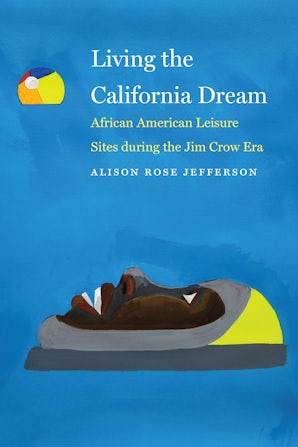"Alison Rose Jefferson documents a world I knew little about before reading her new important book. . . . Her book is a credit and an homage to the Black folk who toughed it out, bearing the indignity of police surveillance, arson, and financial and psychological violence so that their descendants could prosper."—Eisa Nefertari Ulen, Los Angeles Review of Books
"This work persuasively highlights the importance of public history and memory to combat the erasure of Black and local history. With the research from this book also being used to support campaigns to recognize African American leisure sites, like Bruce’s Beach, via plaques, site renaming, and through public education, Jefferson simultaneously demonstrates the more practical application of public history."—Jeanelle K. Hope, Western Historical Quarterly
"This book is a timely reminder that many hands built California, perpetuated its myth and legend as a western paradise, and those hands were not all white. This book brings Black people into the California story, raises them from obscure footnotes to important roles worth remembering, acknowledging, and memorializing."—Brian Tanguay, California Review of Books
"[Jefferson] shows that African American leisure pioneers deserve accurate representation. This, then, can lay the groundwork for economic justice."—M. Alison Kibler, New Mexico Historical Review
"Jefferson’s book is a recommended read not only for public historians, but for the general public interested in understanding how easily local history can be lost, and how crucial the work to reclaim these overlooked narratives is in better understanding the past, present, and future of our nation."—Melissa A. Esmacher, Public Historian
"Going forward, this book should continue to shape and inform how communities, in Southern California and beyond, remember and learn from their pasts."—Andrew W. Kahrl, Southern California Quarterly
"In Living the California Dream, Jefferson recognizes and responds to the urgency to collect and preserve the diverse geography of race embedded in Californian leisure sites during the Jim Crow Era."—Azariah M. Reese, Journal of Geography
"Jefferson's work is simultaneously a powerful indictment of white racist practices, an inspiring revelation of Black entrepreneurial courage, and a much-needed call for a more robust public history of African American self-determination."—Reynolds J Scott-Childress, Journal of American History
"Jefferson's meticulous research and voluminous notes make this book an important contribution to the scholarship of California and the West. Most importantly, she brings these important historic sites back to life."—Gretchen Sullivan Sorin, Journal of African American History
"Living the California Dream helps us understand the relationship between race, public space, and historical memory. It reveals the exclusion of African American experiences in and contributions to Southern California's recreational landscapes. Drawing on a rich collection of archived records, newspapers, maps, and photographs, Jefferson produces a new image of the Black experience in the West and makes a valuable contribution to the scholarship on African Americans in California."—Joy Miller, Journal of San Diego History
